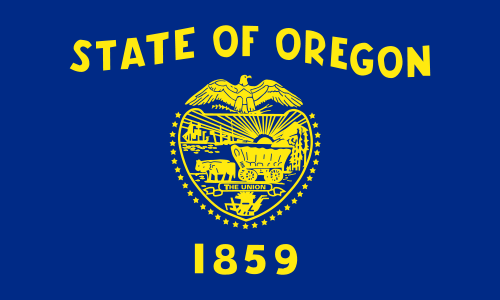Oregon Measure 8, Prohibits Payment for Local Telephone Exchanges Initiative (1986)
| Oregon Measure 8 | |
|---|---|
| Election date |
|
| Topic Utility policy |
|
| Status |
|
| Type Initiated state statute |
Origin |
Oregon Measure 8 was on the ballot as an initiated state statute in Oregon on November 4, 1986. It was approved.
A "yes" vote supported prohibiting the Public Utility Commissioner from requiring local measured telephone service payments from customers. |
A "no" vote opposed prohibiting the Public Utility Commissioner from requiring local measured telephone service payments from customers. |
Election results
|
Oregon Measure 8 |
||||
|---|---|---|---|---|
| Result | Votes | Percentage | ||
| 802,099 | 79.89% | |||
| No | 201,918 | 20.11% | ||
Text of measure
Ballot title
The ballot title for Measure 8 was as follows:
| “ | PROHIBITS MANDATORY LOCAL MEASURED TELEPHONE SERVICE EXCEPT MOBILE PHONE SERVICE QUESTION - Shall Public Utility Commissioner be prohibited from requiring local measured telephone service except for land, marine or air mobile service? EXPLANATION - Proposed law prohibits Public Utility Commissioner from requiring telephone customers to pay for local exchange service on a mandatory measured service basis. “Measured service” means charging for local service based upon number, length, distance or time of calls, or combination thereof. Mandatory measured service for land, marine, air mobile phone service or local exchange service resold at a profit is not prohibited. Commissioner may not take action, including local exchange boundary changes, circumventing this Act. | ” |
Full Text
The full text of this measure is available here.
Path to the ballot
An initiated state statute is a citizen-initiated ballot measure that amends state statute. There are 21 states that allow citizens to initiate state statutes, including 14 that provide for direct initiatives and nine (9) that provide for indirect initiatives (two provide for both). An indirect initiated state statute goes to the legislature after a successful signature drive. The legislatures in these states have the option of approving the initiative itself, rather than the initiative appearing on the ballot.
In Oregon, the number of signatures required for an initiated state statute is equal to 6% of the votes cast in the last gubernatorial election. A simple majority vote is required for voter approval.
See also
External links
Footnotes
State of Oregon Salem (capital) | |
|---|---|
| Elections |
What's on my ballot? | Elections in 2025 | How to vote | How to run for office | Ballot measures |
| Government |
Who represents me? | U.S. President | U.S. Congress | Federal courts | State executives | State legislature | State and local courts | Counties | Cities | School districts | Public policy |


